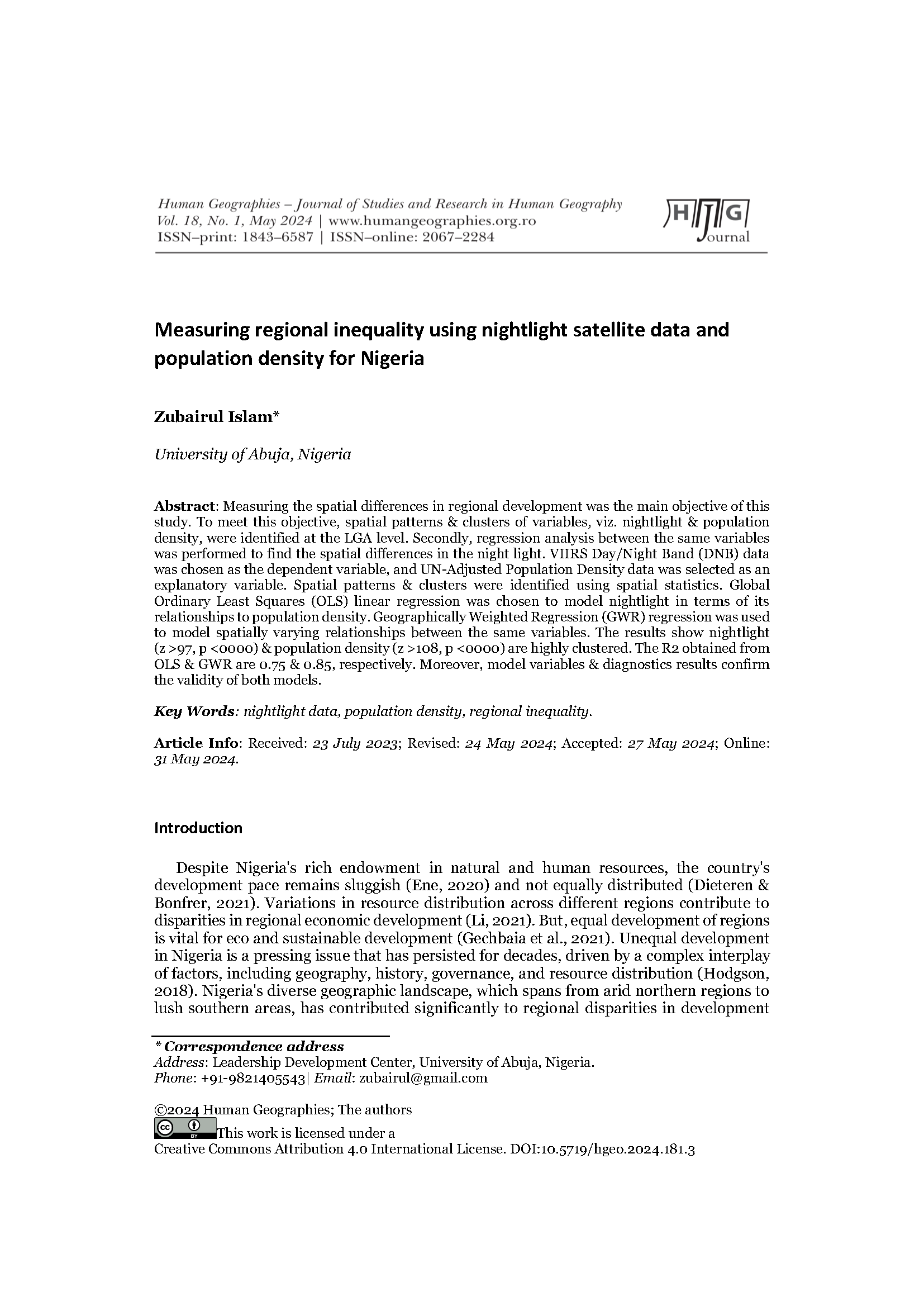Measuring regional inequality using nightlight satellite data and population density for Nigeria
DOI:
https://doi.org/10.5719/hgeo.2024.181.3Abstract
Measuring the spatial differences in regional development was the main objective of this study. To meet this objective, spatial patterns & clusters of variables, viz. nightlight & population density, were identified at the LGA level. Secondly, regression analysis between the same variables was performed to find the spatial differences in the night light. VIIRS Day/Night Band (DNB) data was chosen as the dependent variable, and UN-Adjusted Population Density data was selected as an explanatory variable. Spatial patterns & clusters were identified using spatial statistics. Global Ordinary Least Squares (OLS) linear regression was chosen to model nightlight in terms of its relationships to population density. Geographically Weighted Regression (GWR) regression was used to model spatially varying relationships between the same variables. The results show nightlight (z >97, p <0000) & population density (z >108, p <0000) are highly clustered. The R2 obtained from OLS & GWR are 0.75 & 0.85, respectively. Moreover, model variables & diagnostics results confirm the validity of both models.





